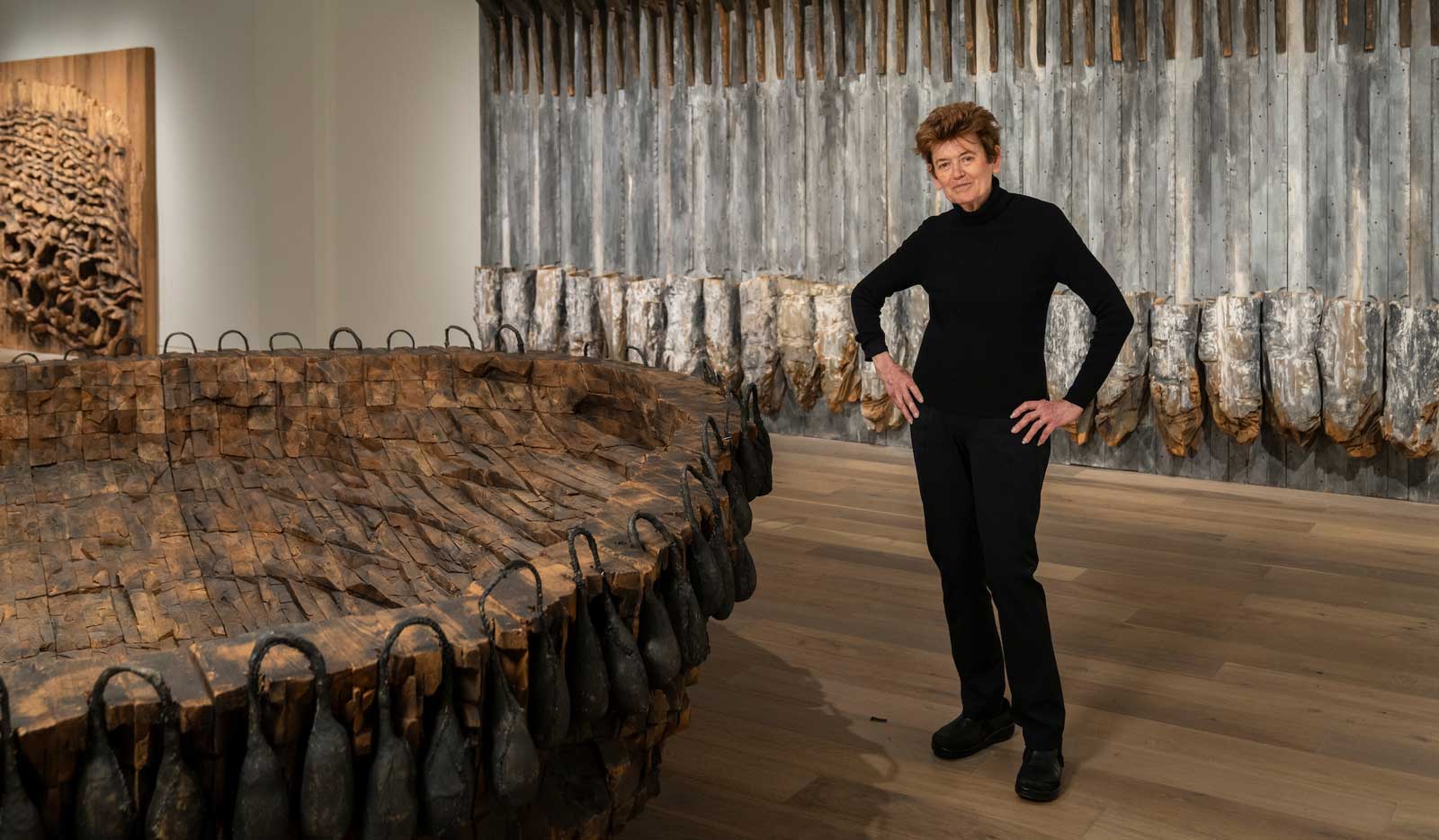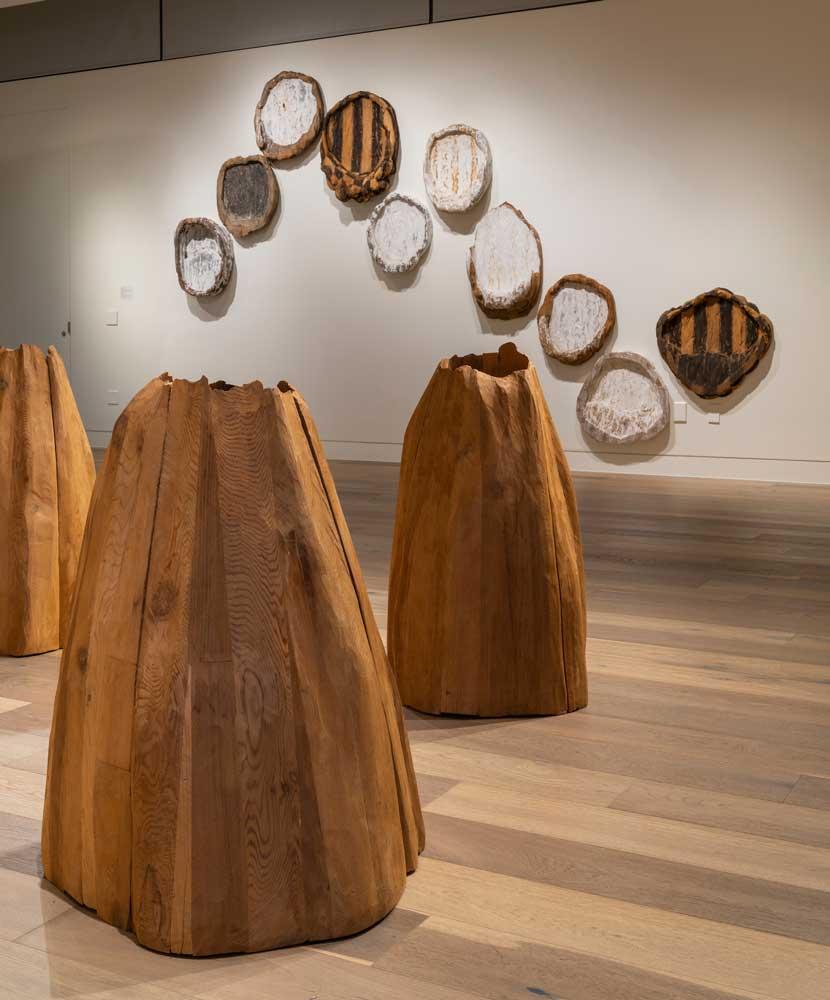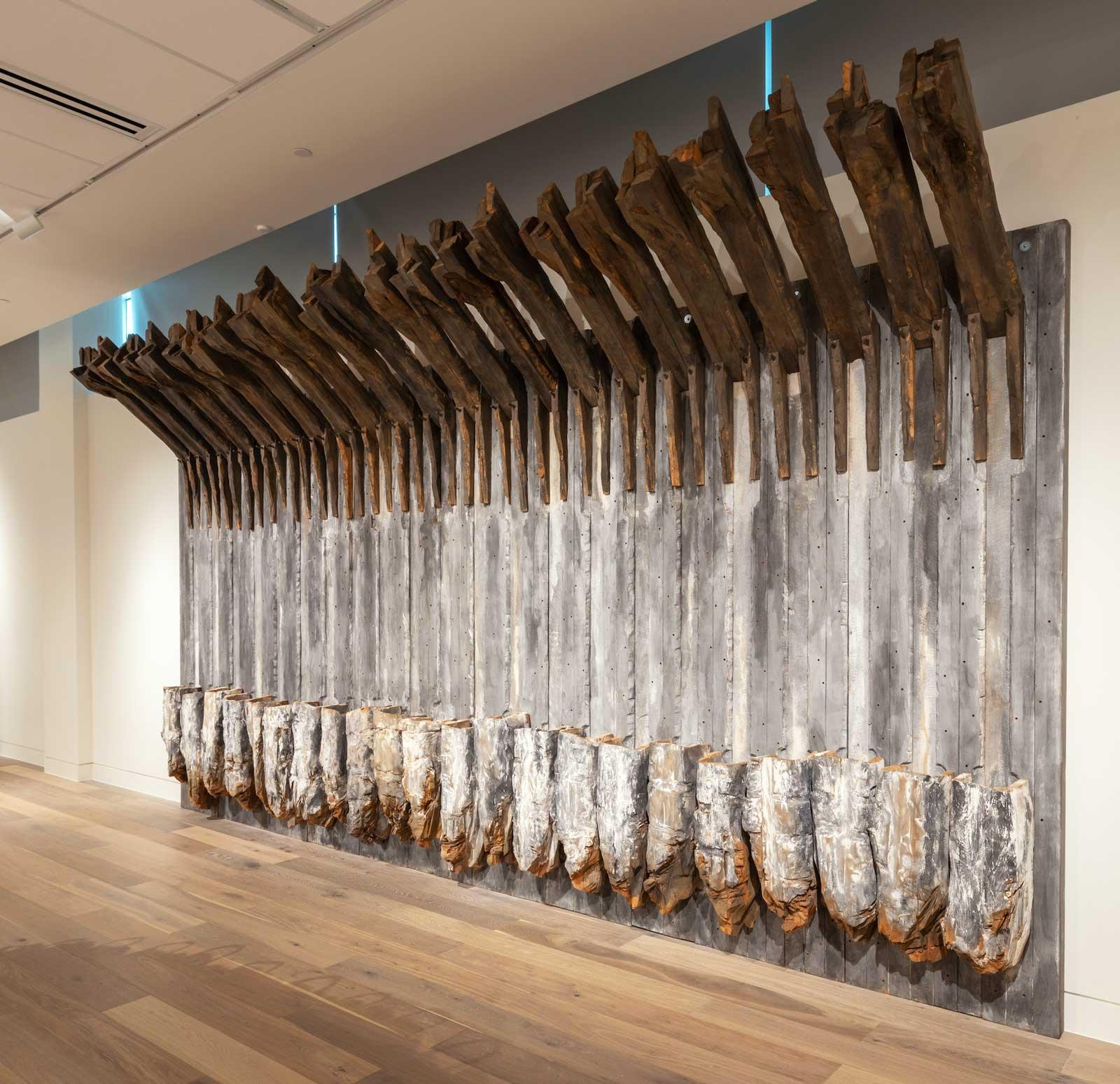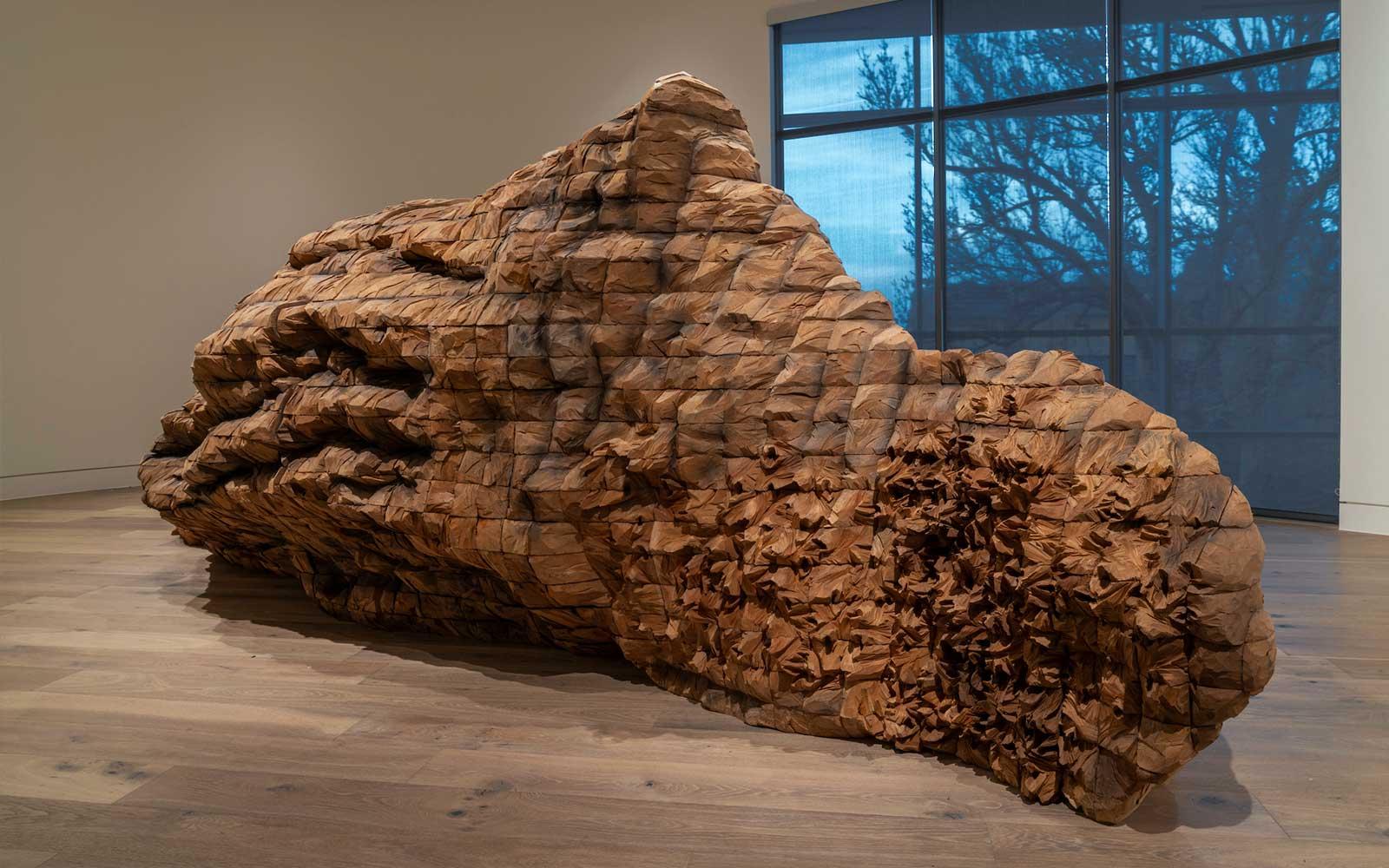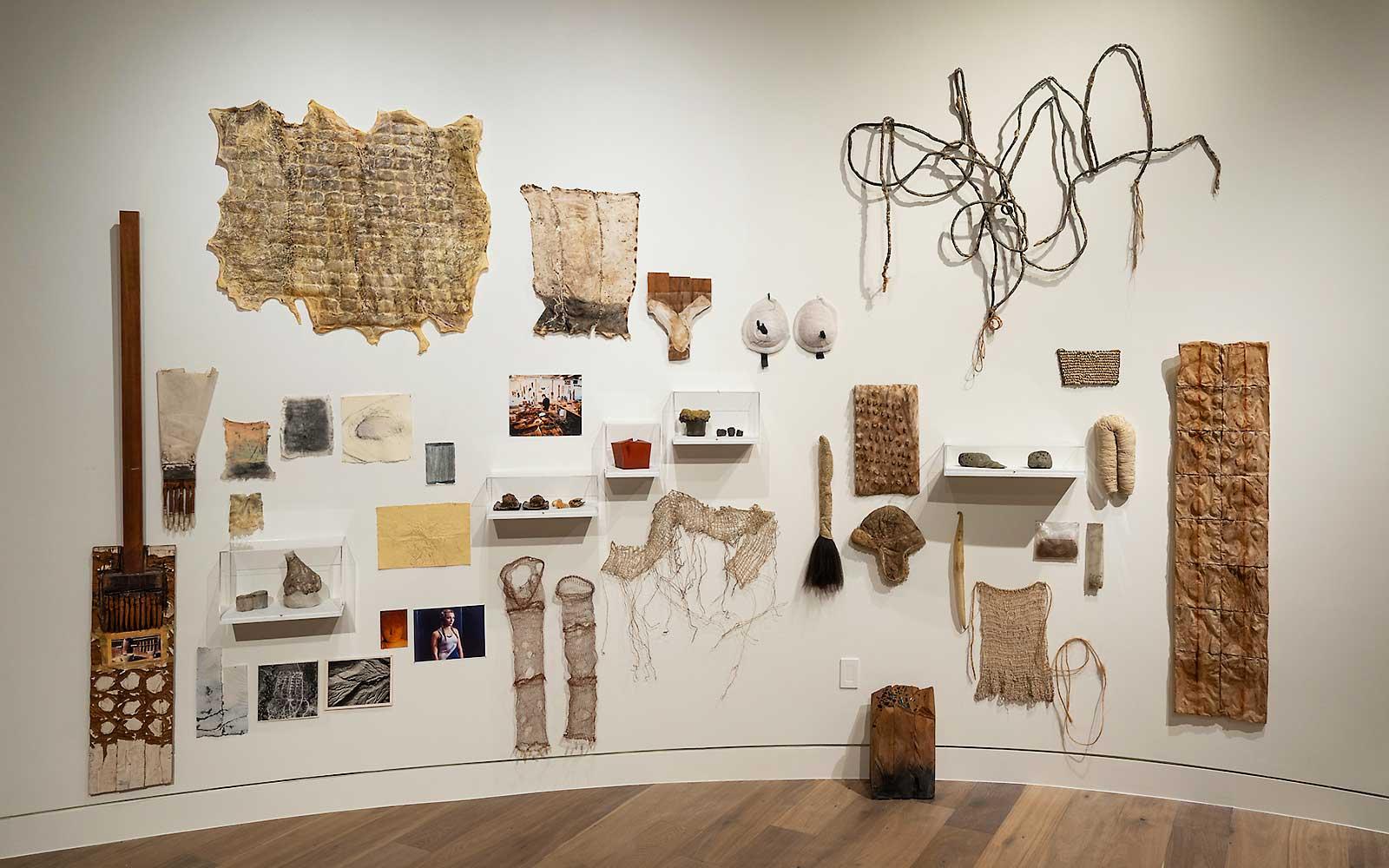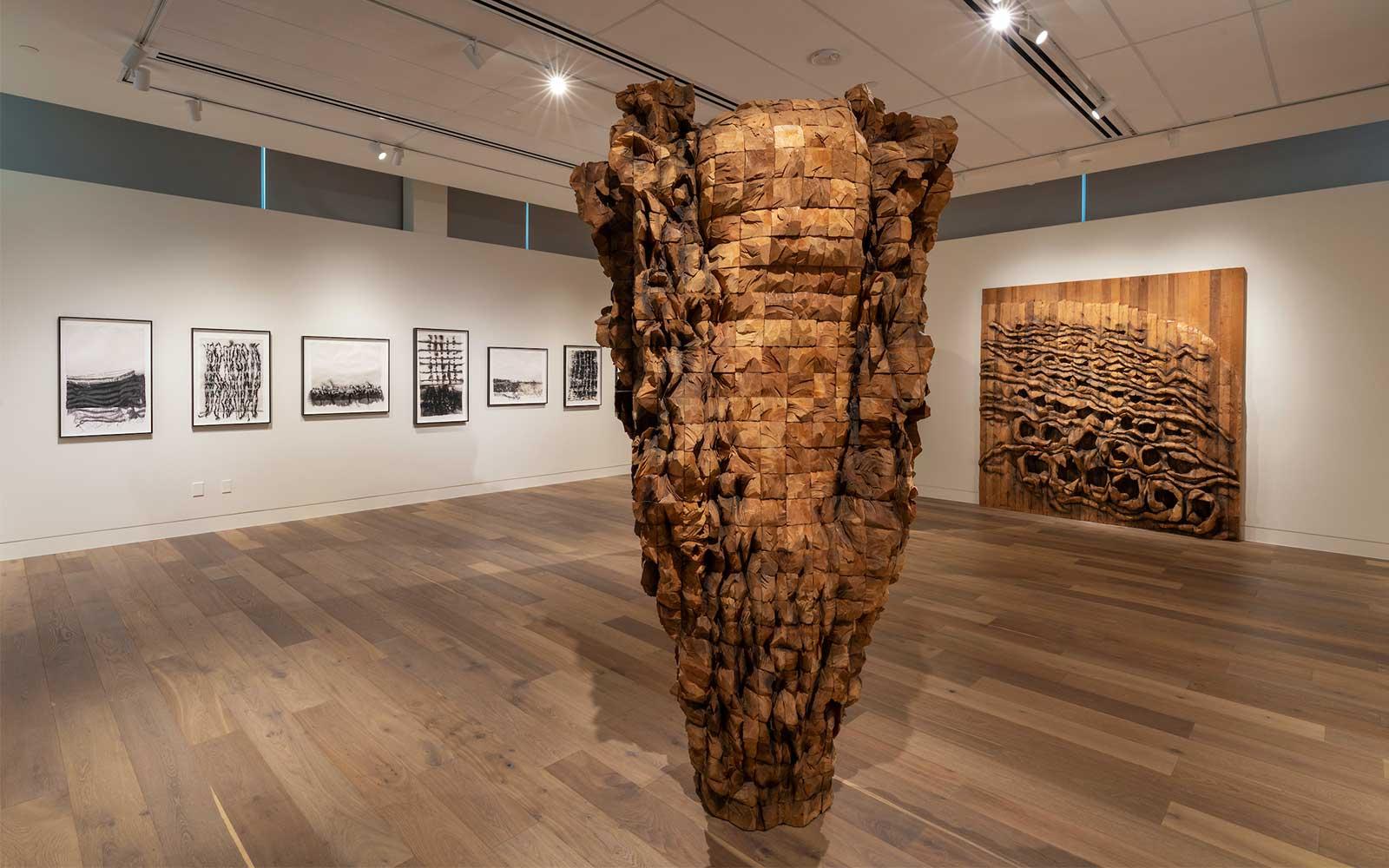Ursula von Rydingsvard’s monumental works found an ideal temporary home in the galleries at Denver Botanic Gardens. Her one-woman show titled Contours of Feeling—a phrase from Rainer Maria Rilke, one of the artist’s favorite writers—runs through September 11, 2022.
Von Rydingsvard is an American artist for our times. Born in Germany in 1942, to a Ukrainian father and a Polish mother, the sculptor shoulders the gravitas of a World War II upbringing fraught with violence, refugee camps, poverty, and immigration. She frequently titles her works in Polish left untranslated.
The current war in Ukraine weighs particularly heavy on von Rydingsvard, and she noted the importance of public art, particularly during times of human turmoil.
“In Ukraine, sculptures have had a presence. The large freedom sculpture in Independence Square, and also I heard recently about a statue commemorating friendship between Ukraine and Russia taken down,” the artist tells Art & Object.
“With what we saw during rioting associated with Black Lives Matter, we’re more aware that public sculpture has extraordinary presence, meaning, emotion. Public art is powerful,” says von Rydingsvard, “especially monumental works.”
Von Rydingsvard’s oeuvre consists mostly of monumental works.
“She’s exceedingly unusual as a woman artist working on that scale,” says guest curator Mark Rosenthal. “She grew up as an artist surrounded by men who worked on that scale. She knew no barriers, since she had broken so many barriers. The word ‘fierce’ comes to mind. When you work on that scale you want to be noticed.”
The large-scale works look and feel at home in the Denver Botanic Gardens galleries, the proportions practically perfect.




